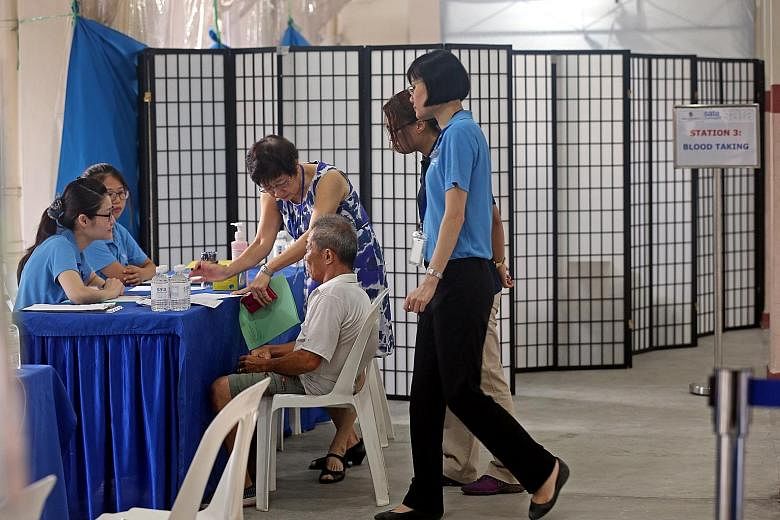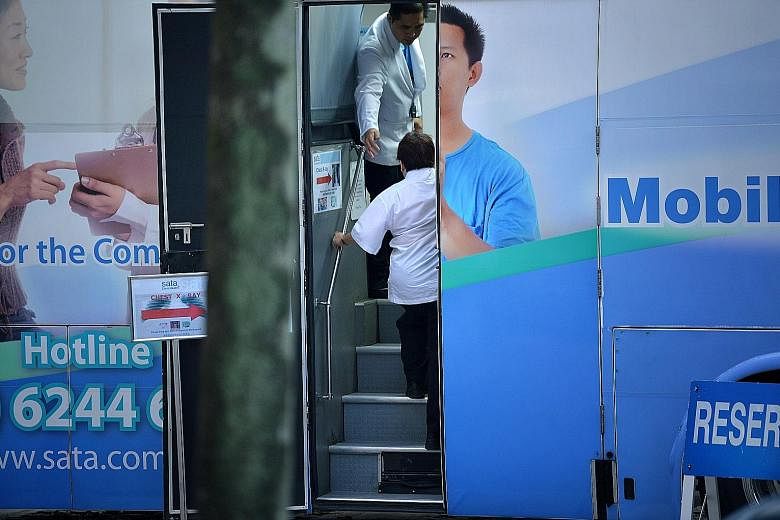In June, a doctor at Tan Tock Seng Hospital's tuberculosis control unit noticed something odd.
The most recent person to be diagnosed with multidrug-resistant tuberculosis (TB) lived in the same block as another man who had an identical strain of the disease.
Dr Cynthia Chee's astute observation led to the discovery of a "highly unusual" TB cluster in an Ang Mo Kio block of flats.
It comprised six people who had been diagnosed with the rare strain over a four-year period.
The finding led to the Health Ministry organising a mass screening exercise to check for potentially undetected cases among residents there.
While TB is relatively common in Singapore - with around 36 cases per 100,000 population last year - multidrug-resistant TB is much less so. What remains a mystery is how the six people in Ang Mo Kio, who were from four different households, managed to get the same strain of drug-resistant TB.
Three of the six lived together, but the others told Health Ministry officials that they did not know or interact with one another, and had not congregated in common areas.
TB is typically spread through close and prolonged contact with an infected person. Even among members of the same household, transmission could take days or weeks to occur.
It eventually emerged that the index case for the Ang Mo Kio cluster was also the first to be diagnosed in an older TB cluster reported in 2013.
The man had allegedly been coughing for four months before he was diagnosed in 2012. However, he defaulted on treatment.
The authorities caught up with him only about a month later, following which he was compelled to go for treatment.
People who do not go for TB treatment pose a risk to both themselves and the public.
If they do not complete their treatment, they have a higher chance of developing drug-resistant TB, making the disease more deadly and difficult to treat.
In such situations, treatment takes longer and the chances of treatment failure are also much higher.
Linette Lai
TOMORROW
Food, entertainment and technology get a shakedown


